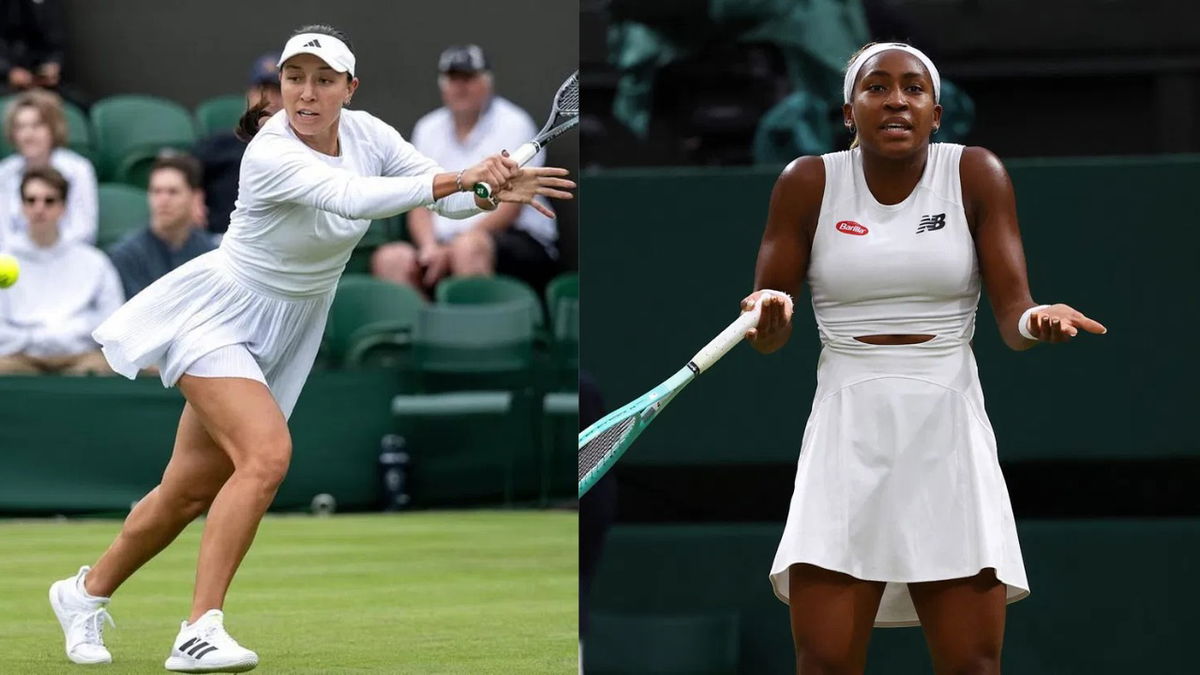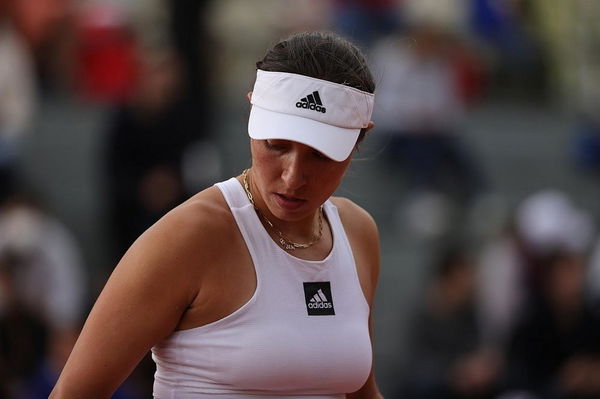

Wimbledon Day 2 has been full of drama with French Open champ Coco Gauff aiming to match Serena Williams’ rare “Channel Slam” feat—winning both Paris and London—but struggling on grass with a 24-12 record. Her most recent loss was against Ukrainian qualifier Dayana Yastremska in the first round of Wimbledon. Meanwhile, third seed Jessica Pegula suffered a stunning upset, falling to No. 116 Elisabetta Cocciaretto in straight sets, despite coming fresh off her Bad Homburg title win over Iga Swiatek. But why did these Americans struggle at SW19?
Watch What’s Trending Now!
Here’s the thing: The ATP and WTA tours mainly play on hard, clay, or grass courts, and each surface comes with its own set of unique challenges. Hence, players must have different strategies and styles depending on the surface. For instance, clay courts are best for long baseline rallies and strategic play, while grass accommodates serve-and-volley games. Hard courts span the extremes of grass and clay and are commonly found around the world. Hard courts are also the type that are most commonly found in the US, as per Play Pennsylvania.
Top 10 hard-court countries:
ADVERTISEMENT
- Venezuela
- Slovenia
- Israel
- Canada
- South Africa
- Ireland
- Hungary
- Australia
- USA
- Finland
In the United States, hard courts dominate the tennis scene, unlike Europe or South America, where clay courts are common. This means young American players develop a style tailored to the consistent, medium-fast bounce of hard courts, often relying on powerful groundstrokes and aggressive baseline play. Reflecting this trend, professional tennis (ATP and WTA) features mostly hard-court tournaments—over half—while clay accounts for about a third, and grass just over 10%.
It’s no surprise that countries with more clay courts produce more clay-court champions. Within the U.S., California leads the pack by producing 25% of the nation’s tennis champions, followed by New York and Texas, each contributing 10%. The U.S. boasts roughly 270,000 tennis courts, making up about 16% of all courts worldwide—a massive infrastructure for the sport. Grass courts are much rarer, but American and Australian players tend to dominate on this surface, as per Play Pennsylvania.
ADVERTISEMENT
Country and grass court titles:
Australia: 11
USA: 9
UK: 3
Spain: 2
Germany: 2
Sweden: 2
ADVERTISEMENT
According to the Grass Tennis Club, the USA ranks third globally for grass tennis, with 22 clubs and 94 grass courts. That’s impressive, but is it enough for American players to stay competitive on grass? After all, tennis is an international game, and players spend most of their time away from home.

Imago
Image Credits: Jessica Pegula/Instagram
The ATP runs more than 60 events in 30 countries, while the WTA hosts 56 tournaments in 29 countries. With this constant travel, players mostly compete on hard courts, indoors or outdoors, shaping their game to the global hard-court circuit.
ADVERTISEMENT
Perhaps this could be a reason behind Coco Guaff’s struggle on the grass. She told The Guardian in 2023, “I’m still trying to get used to grass. It’s the toughest surface, I think, to adjust to because the season is so short that you better get it together quick or you’re not going to get together until next year.” And while she’s perfected her game on clay, grass titles have eluded her. But what about Pegula?
Jessica Pegula opens up about her loss at Wimbledon
On Tuesday at Wimbledon, the third seed faced a shocking upset, falling 6-2, 6-3 in just 58 minutes to world No. 116 Elisabetta Cocciaretto. The Italian cruised through the match, breaking Pegula’s serve three times and never facing a break point herself. Cocciaretto’s fearless, aggressive play left Pegula struggling, as the American managed only five winners against 24 unforced errors. “This is definitely probably the worst result I’ve had all year,” she admitted, praising Cocciaretto’s level of tennis that she couldn’t match.
ADVERTISEMENT
Jessica Pegula, fresh off her Bad Homburg title win over Iga Swiatek, didn’t look great from the start. She landed just half of her first serves and couldn’t find rhythm on grass. “It’s so frustrating when something you’ve been working on doesn’t come through when you want it to, especially on grass,” she said. This marks Pegula’s first first-round Grand Slam loss since the 2020 French Open.
For Cocciaretto, the victory was a career milestone—her second Top 10 win and the biggest upset of Wimbledon 2025 so far. The 24-year-old Italian, who had been stopped by Pegula in 2023, played with confidence and precision, hitting 17 winners and serving rock solid, dropping only eight points on serve. “Playing on this court is a dream for me,” she beamed after the match, making history as the first Italian woman to beat a top-three seed at Wimbledon in the Open Era.
While Pegula’s early exit shocked fans, other Americans like Madison Keys, Emma Navarro, and Amanda Anisimova have advanced to the next round. The question now is whether Pegula and Coco Gauff can regroup and come back stronger in upcoming tournaments—and maybe even make a deeper run if they return to Wimbledon next year. What do you think? Share your thoughts below! In the meantime, you can catch all the action at Wimbledon on our Live Blog!
ADVERTISEMENT
ADVERTISEMENT
ADVERTISEMENT

